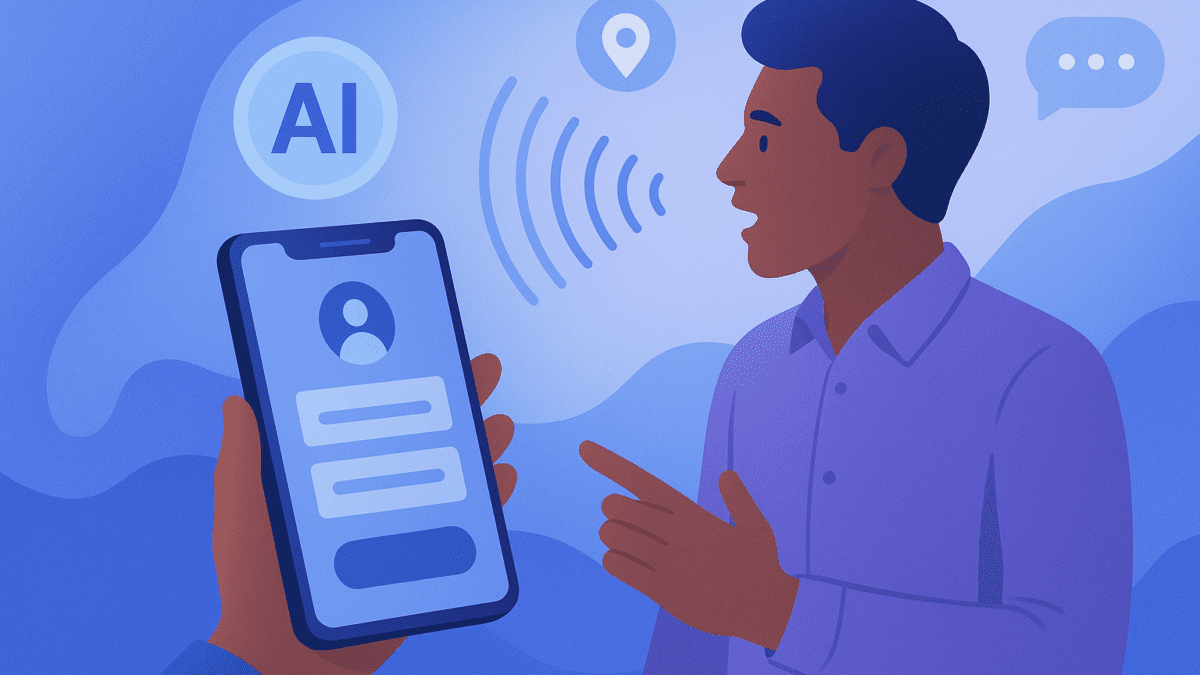Ambient Lead Generation: Using Voice & Ambient AI to Capture Leads from Everyday Interactions
Table of Contents
Introduction
Lead generation has always been the heartbeat of B2B marketing. Traditionally, businesses relied on forms, gated content, and direct outreach to capture prospect information. But in 2025, the landscape is shifting dramatically. With the rise of ambient AI—technologies that work seamlessly in the background through voice assistants, IoT devices, and smart environments—marketers are exploring an entirely new frontier: ambient lead generation.
Imagine a potential customer casually asking their AI assistant for vendor comparisons or technical documentation. That simple interaction could automatically feed into your CRM as a warm lead. Welcome to the future of lead generation, where conversations, not clicks, become your primary funnel.
What Is Ambient Lead Generation?
Ambient lead generation refers to capturing leads through voice-first and AI-driven interactions that happen naturally in a user’s daily environment. Unlike traditional campaigns that demand action (fill a form, download a whitepaper), ambient lead gen leverages background tools like:
- Voice Assistants (Siri, Alexa, Google Assistant)
- AI Agents integrated into work apps (Slack, Teams, WhatsApp)
- Smart Devices & IoT that capture intent signals (car dashboards, smart TVs, AR/VR devices)
It’s about meeting buyers where they already are—without friction.
Why It’s Different from Traditional Lead Gen
Traditional methods focus on outbound triggers (ads, email blasts) or inbound pull (SEO, content forms). Ambient lead generation, on the other hand, is:
- Proactive: AI anticipates needs before a buyer explicitly searches.
- Frictionless: No long forms or multiple clicks—just a voice request.
- Contextual: Based on real-time intent signals, not outdated personas.
This makes it highly relevant in an era where decision-makers value speed, personalization, and convenience.
Real-World Examples of Ambient Lead Gen
- Voice-Enabled Search in B2B
A procurement manager says: “Find me case studies on AI-driven CRMs.”
→ The AI assistant surfaces a vendor’s whitepaper, and the interaction logs as a qualified lead. - AI Agents in Workflows
Within Slack, a sales agent’s AI bot automatically offers “Would you like vendor benchmarks for this tool?”
→ A simple “yes” creates a sales-ready lead for the vendor. - IoT-Powered Triggers
A smart car dashboard prompts: “Your business insurance renewal is due. Would you like tailored options?”
→ Lead data flows directly to providers in real time.
Benefits of Ambient Lead Generation
- Higher Lead Quality: Captures high-intent moments when users actively seek answers.
- Shorter Sales Cycles: Immediate handoff from interaction to CRM follow-up.
- Scalability: One AI system can handle thousands of simultaneous lead interactions.
- Personalization: Responses are contextual, based on ongoing conversations or environment cues.
Challenges to Overcome
While exciting, ambient lead generation comes with hurdles:
- Data Privacy & Compliance: Collecting leads through voice/AI demands clear consent.
- Technology Integration: CRM, AI assistants, and syndication platforms must work seamlessly.
- User Trust: Businesses need to avoid feeling “intrusive” by ensuring transparency.
Those who solve these challenges first will gain a first-mover advantage in the next evolution of B2B lead gen.
Preparing Your Business for Ambient Lead Gen
- Voice-Enable Your Content
Convert blogs, whitepapers, and FAQs into voice-search friendly formats. - AI Integration with CRM
Ensure that voice/ambient queries can automatically log into Salesforce, HubSpot, or Zoho. - Content Syndication Upgrades
Syndicate assets (whitepapers, reports, videos) not just across websites but into voice platforms and AI ecosystems.
👉 Explore how B2B Content Syndication Services from iTMunch can ensure your assets reach the right audience—even in emerging AI-driven environments.
Conclusion: The Next Era of Lead Generation
Ambient lead generation is not about replacing traditional methods—it’s about adding a new layer of intelligence and accessibility. By tapping into everyday interactions through AI, voice, and IoT, businesses can capture leads more naturally and at the exact moment of intent.
The future of B2B marketing won’t just be about who clicks your ad—it will be about who asks their AI agent about your solution. Forward-thinking companies should start experimenting now, before competitors dominate this futuristic but fast-approaching channel.
You May Also Like: What is Lead Generation?





